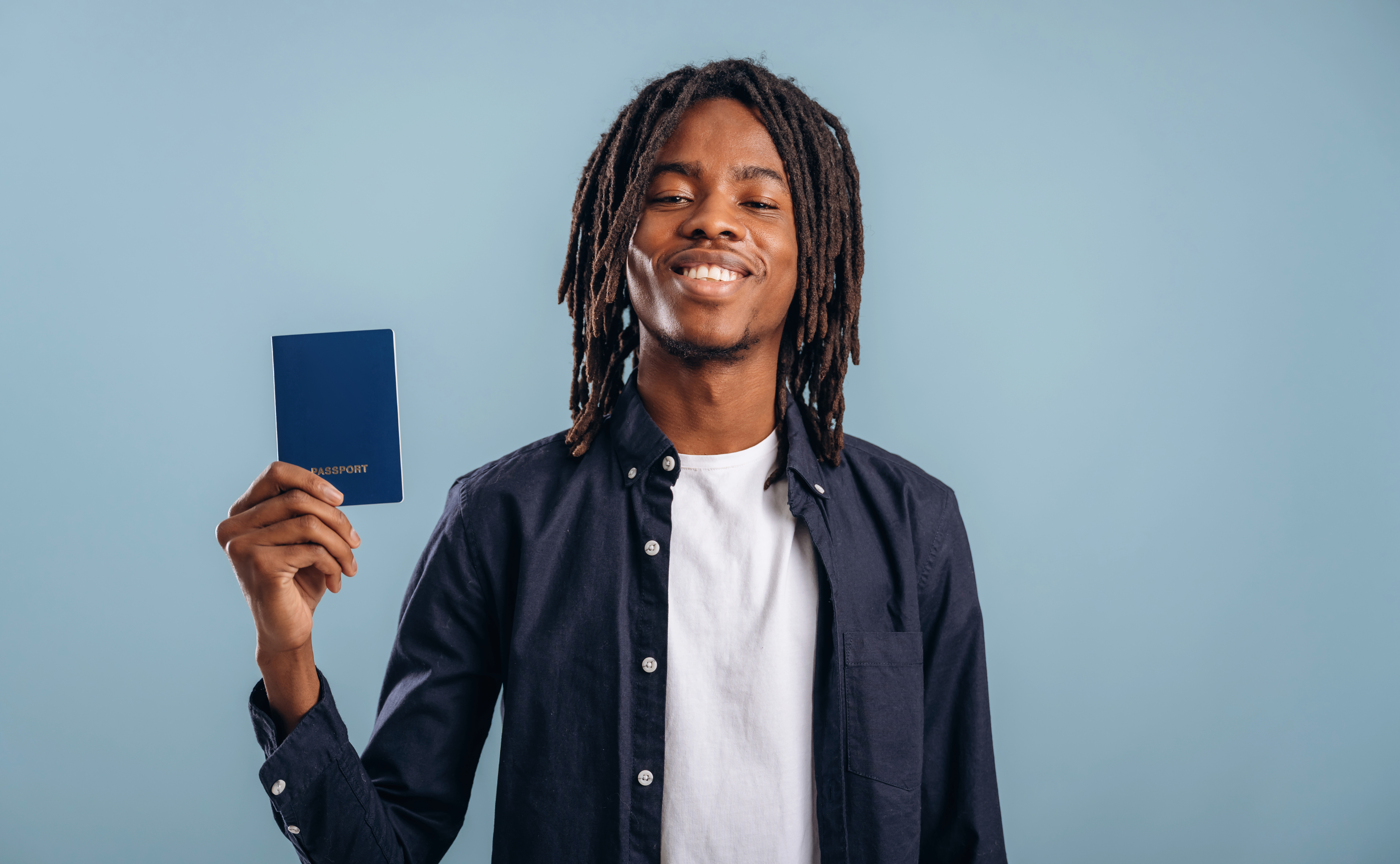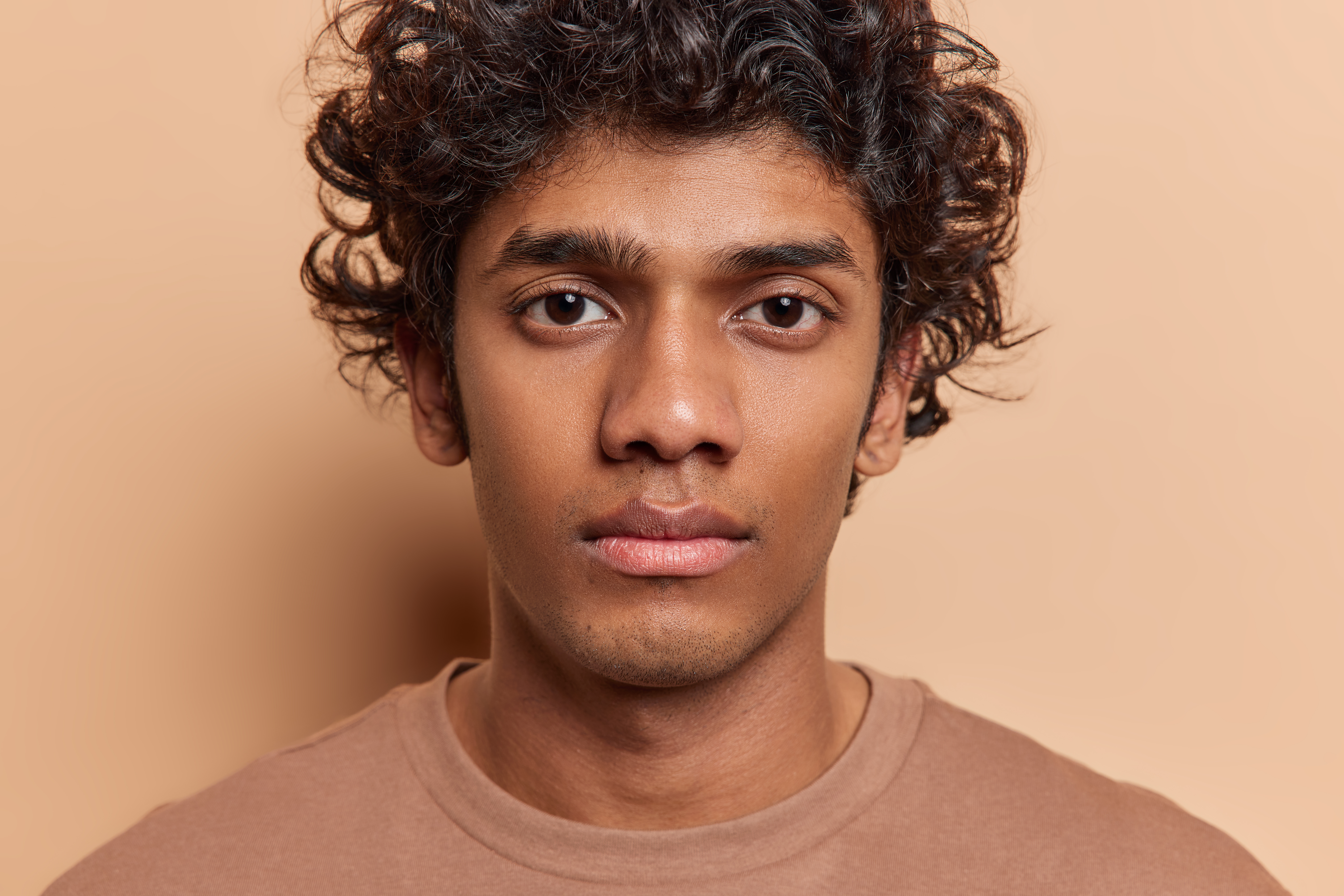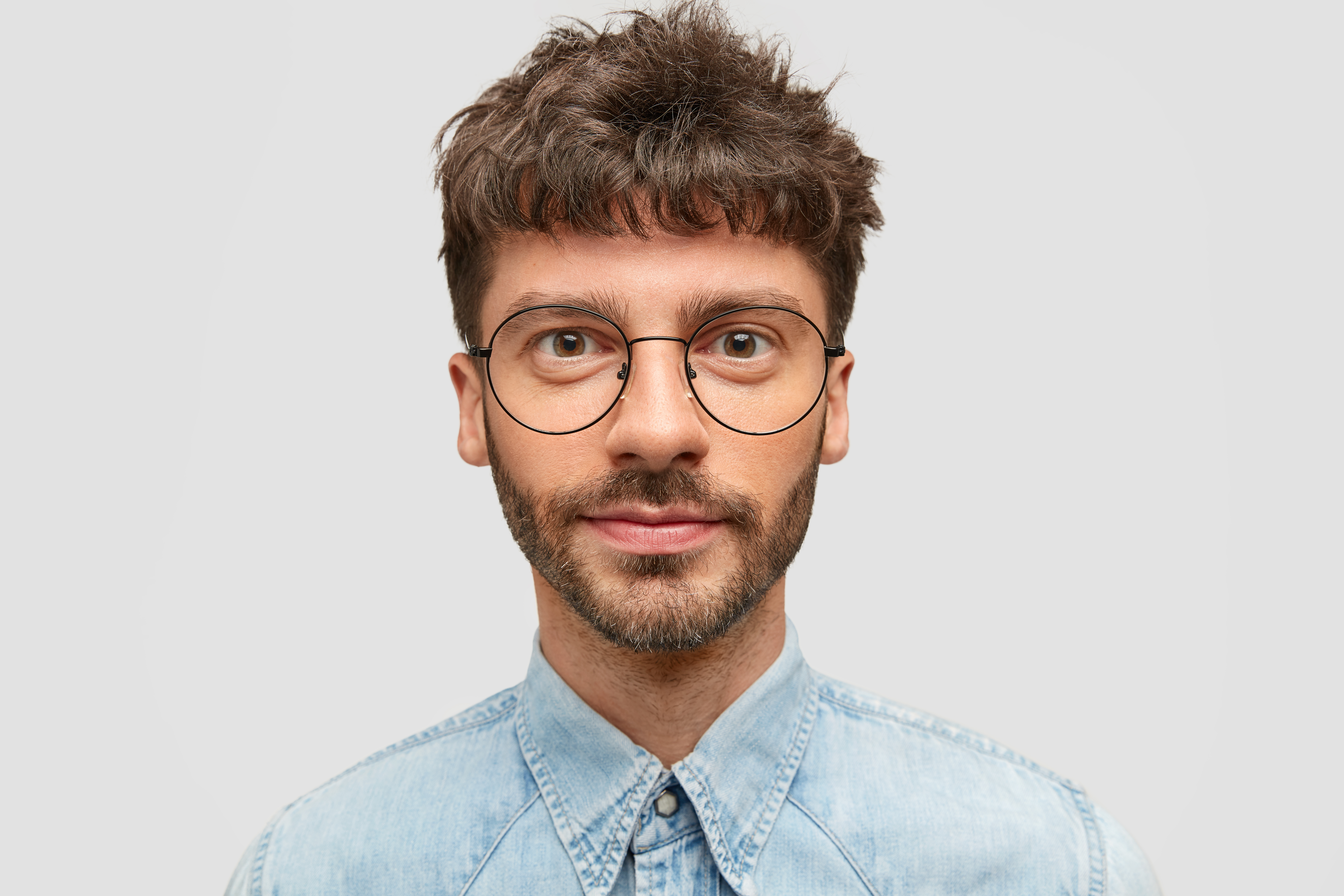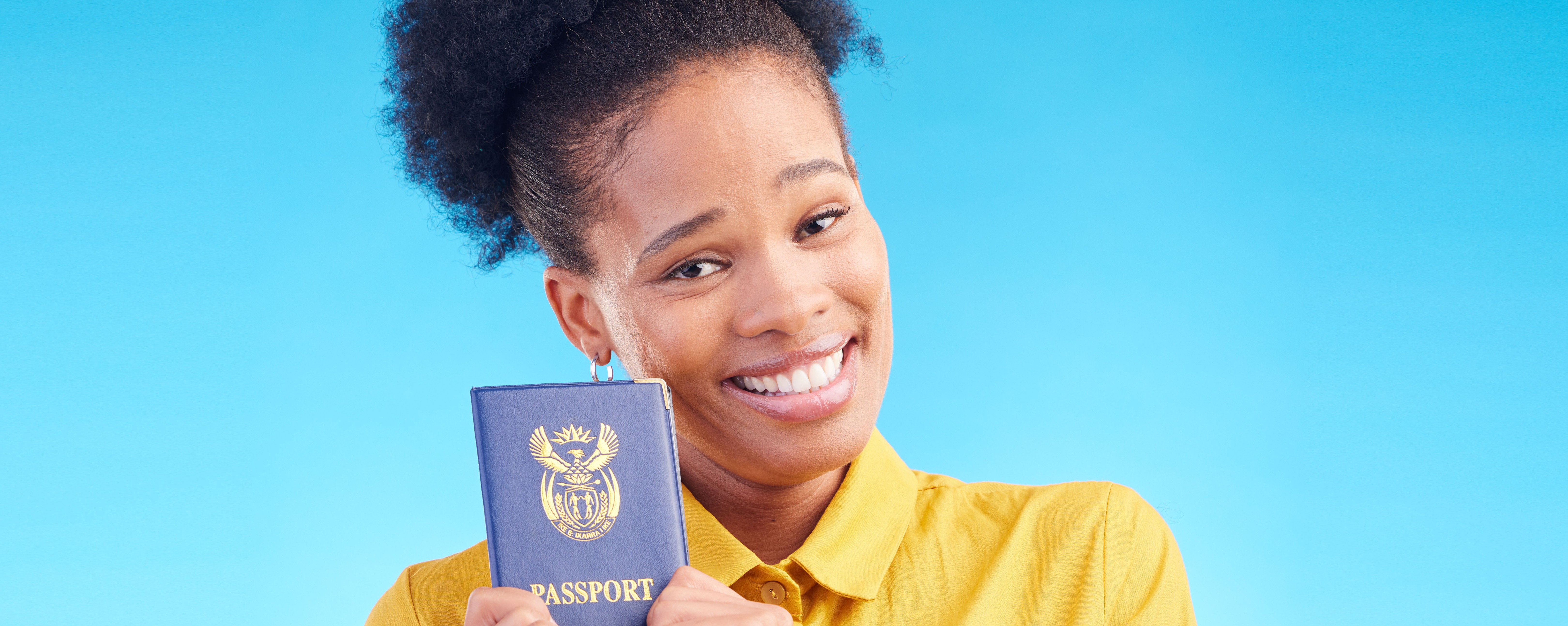
Passport Photo Hair Rules
Many people focus on details like choosing the right outfit or finding the perfect lighting, but hair is one of the most commonly overlooked aspects of passport photo requirements.
For example, having your hair fall into your face or cover your eyes can lead to your photo being rejected, costing you time and effort to retake it.
Whether you're wondering how to style your hair, what to do about facial hair, or worrying about what happens if your photo doesn't meet the requirements, knowing passport photo hair rules will ensure your application is accepted the first time.
Facial Hair in Passport Photos
You're generally allowed to have facial hair in your passport photo. Beards, mustaches, goatees, and other facial hair styles are perfectly acceptable as long as they don't cover your facial features.
However, there are some important considerations. Your facial hair should look well-groomed in your passport photo.
While you can have a full beard, it shouldn't cover your face to the point where your facial features are hidden.
Immigration officers need to be able to clearly see your jawline, chin, and cheeks for identification purposes.
If you wear facial hair for religious or medical reasons, this is completely acceptable. Just make sure it still allows for clear facial recognition.
Can You Wear Your Hair Up in a Passport Photo?
There's no rule against tying your hair up, putting it in a bun, or styling it in an updo.
Your ears should be visible: if your hairstyle covers both ears, you might be asked to retake your photo.
Simple hair ties and bobby pins are fine, but large scrunchies, decorative clips, or headbands may cause your photo to be rejected. Accessories shouldn't distract from your face or cast shadows.
Your forehead and hairline should be clearly visible. Pulled-back hair actually helps with this requirement, making it easier for facial recognition technology to work properly.
Can I Have My Hair Down in a Passport Photo?
Wearing your hair down is completely acceptable for passport photos. However, there are a few things to keep in mind to ensure your photo meets the requirements.
Your hair shouldn't cover any part of your face, including your eyes, eyebrows, nose, or mouth. If you have long bangs or side-swept hair, make sure they're styled away from your face or tucked behind your ears.
Long, voluminous hair can sometimes cast shadows on your neck, shoulders, or face. These shadows might cause your photo to be rejected.
Most passport photos require a plain white or light-colored background, so if you have platinum blonde or white hair, make sure there's enough contrast for your features to stand
Tips for Taking a Good Passport Photo with Hair in Mind
Here are a few practical tips to keep in mind, focusing specifically on your hair, to make a perfect passport photo on the first try and avoid any potential rejections:
- Comb your hair beforehand: neat, tidy hair photographs better and looks more professional.
- Test your hairstyle: use your phone to check that your eyes, eyebrows, and entire face are clearly visible.
- Avoid major hair changes right before your appointment: give yourself time to adjust to a new style and ensure it photographs well.
- Choose a timeless style: this photo lasts up to 10 years, so pick a look you'll be comfortable with long-term.
- Use natural, diffused lighting: overhead lights can create unflattering shadows, especially with thick or dark hair.
- Bring hair ties or clips: they can be a lifesaver if your hair causes issues at the appointment.
Following these tips will you achieve a polished and professional photo that you’ll be proud to have for years to come.
What Happens If Your Hair Doesn't Meet the Requirements?
The passport office will notify you that your photo doesn't meet requirements and ask you to submit a new one. This can delay your application, so it's worth getting it right the first time.
Depending on where you took your photo, you might need to pay again for a retake. Some photo services offer guarantees and will retake your photo for free if it's rejected, so ask about this beforehand.
A rejected photo doesn't mean your entire passport application is denied. You'll simply need to provide a compliant photo before your application can proceed.
To avoid this situation, carefully review your passport photo before submitting it.
Frequently Asked Questions
- Can I wear a headscarf or religious head covering?
Yes, religious head coverings are allowed in passport photos. However, your face must be fully visible from the bottom of your chin to the top of your forehead, and both edges of your face must be clearly shown. - What about hair extensions or wigs?
Hair extensions and wigs are perfectly acceptable as long as they don't obstruct your facial features. If you regularly wear a wig, it's actually better to wear it in your passport photo so you look consistent with how you appear day-to-day. - Can I have dyed or colorful hair?
Yes, any hair color is acceptable. Whether your hair is naturally colored or dyed blue, pink, or green, it won't affect your passport photo as long as your face is clearly visible. - Do I need to show both ears?
Requirements vary by country. In the United States, there's no specific rule about showing your ears, but they do recommend that your face is fully visible. Some countries prefer at least one ear to be visible.
Conclusion
Following passport photo hair rules doesn't have to be complicated. Keep your face fully visible, avoid bulky accessories, and ensure your overall appearance is neat and professional.
Whether you choose to wear your hair up or down, with or without facial hair, the key is making sure your features can be clearly identified.
Take your time, review the guidelines, and don't hesitate to ask questions at your photo appointment.


